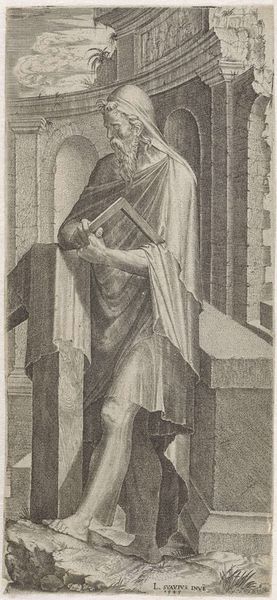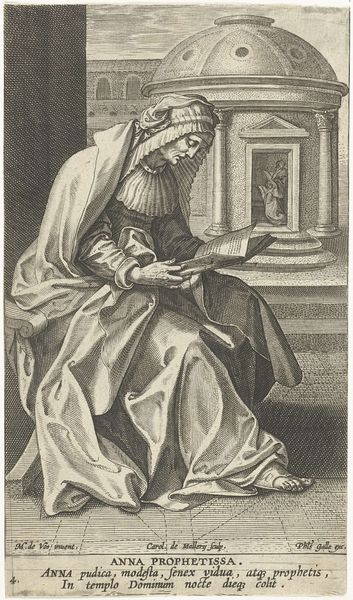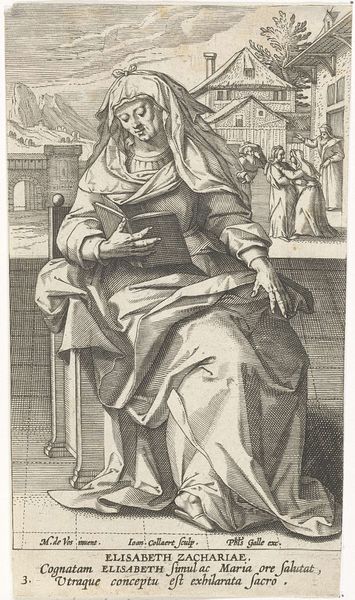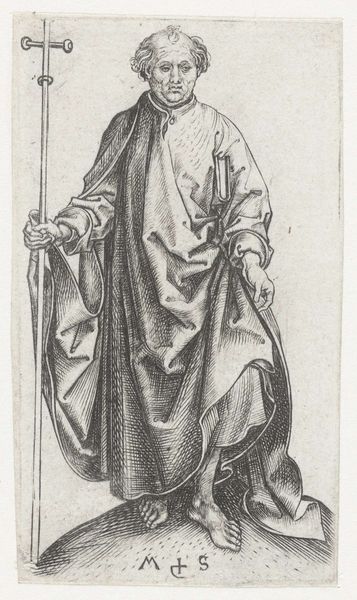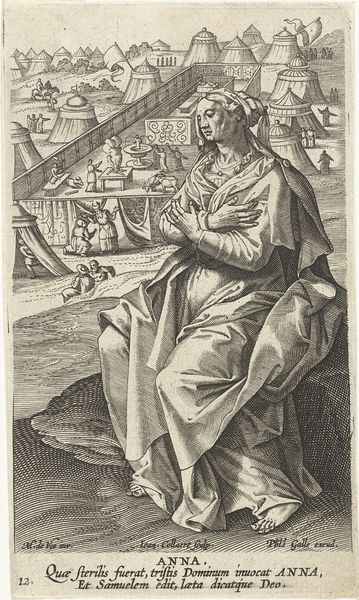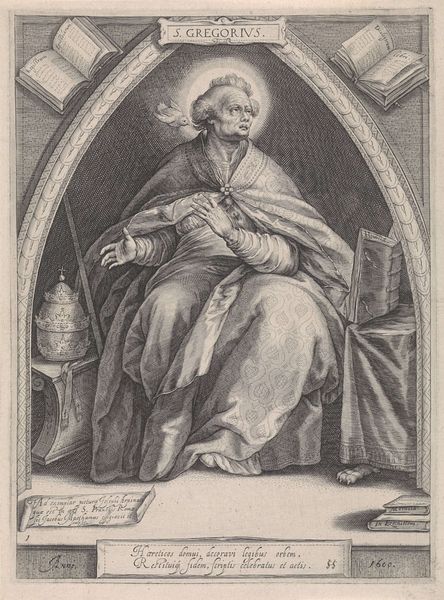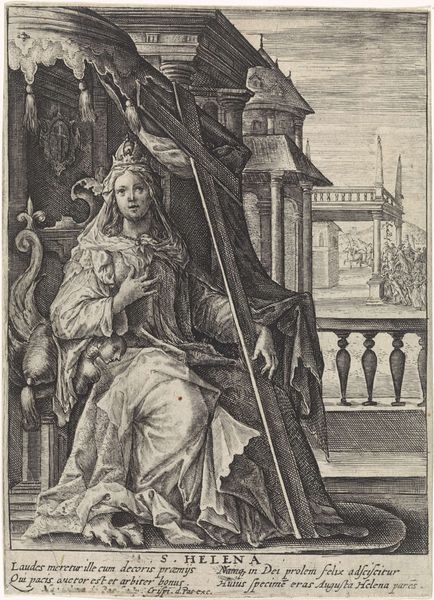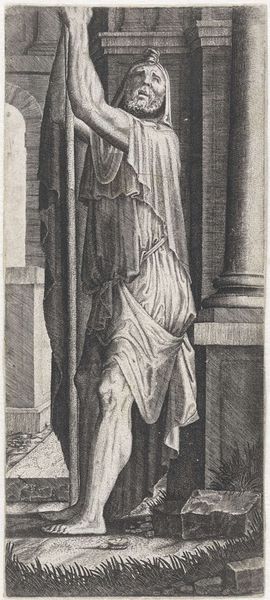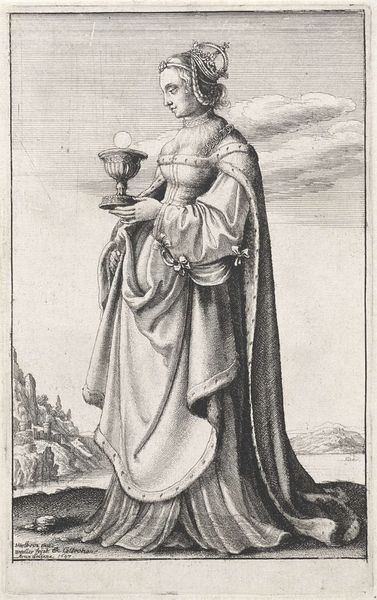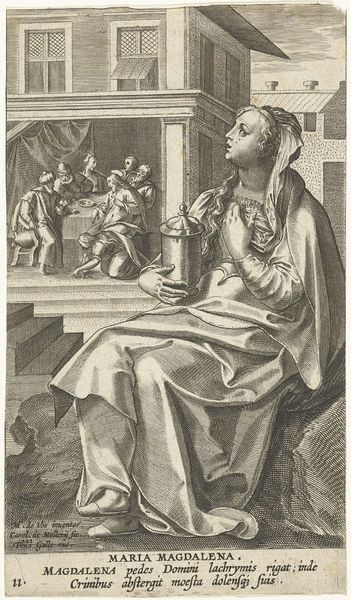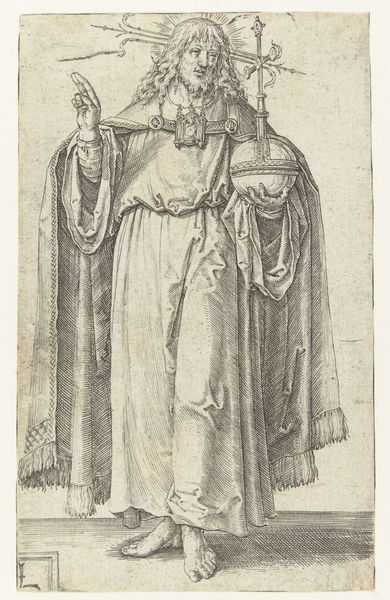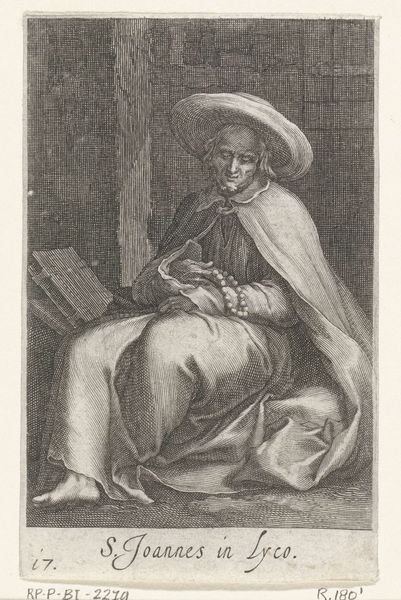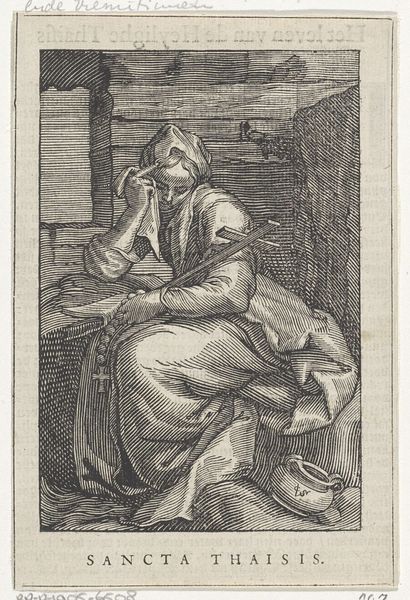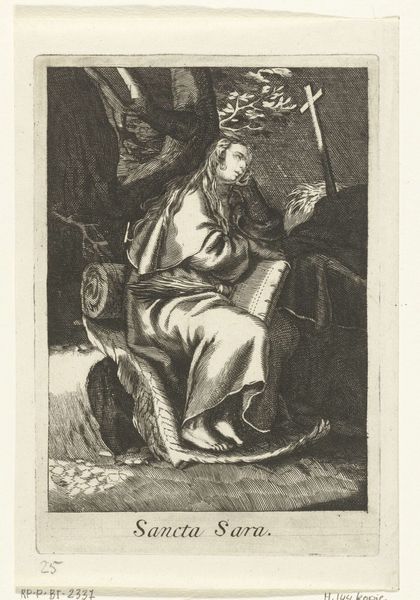
print, engraving
#
portrait
#
baroque
# print
#
old engraving style
#
figuration
#
line
#
history-painting
#
engraving
Dimensions: height 140 mm, width 103 mm
Copyright: Rijks Museum: Open Domain
Curator: This is Magdalena van de Passe's engraving, "Profetes Hanna," created sometime between 1610 and 1638. It’s currently held at the Rijksmuseum. Editor: It's austere. Stark. The figure seems almost swallowed by the architecture, though the folds of her garment are certainly given significant attention. What exactly are we seeing? Curator: We’re presented with the Prophetess Anna from the Gospel of Luke. Van de Passe, coming from a family of printmakers, likely had access to a well-established network for distributing her work, which would influence her decisions in technique and composition for reproducibility and accessibility. The engraving, with its sharp lines, allowed for mass production. Editor: Notice how the sharp lines create the forms. It’s quite baroque in its theatrical presentation, from the setting in what appears to be an open structure in a temple, the play of light, and the texture she generates in Anna’s draped clothes. There is such impressive attention to detail—the city-scape architecture in the background alone deserves more time for study. Curator: Indeed. Consider the materiality of the print itself. Engravings were more accessible than paintings, making biblical narratives more available to a wider audience, who previously had little opportunity to engage in this way. Her being a woman in the printing and publishing business during the 17th century would have been pretty uncommon, as well, in what was otherwise a very male-dominated trade. Editor: It invites questions about accessibility and the production of meaning, doesn’t it? There’s a tension between the individual figure and the rigid lines of the print and the background environment. The way she bowed her head to read or contemplate creates such a mood of reflection and quietness, despite the overall sense of grandiosity created by the cityscape. It's a moment of intimate study made into public spectacle. Curator: This intersection highlights how artistic labor was evolving, particularly with women gaining a foothold in printmaking—though the level of visibility Magdalena enjoyed, being part of a family that was already a publishing juggernaut, might give a false sense of what most women had access to. Editor: Ultimately, “Profetes Hanna” draws me in. It's much more dynamic, intricate, and moving than its austere initial impact would have me believe.
Comments
No comments
Be the first to comment and join the conversation on the ultimate creative platform.
